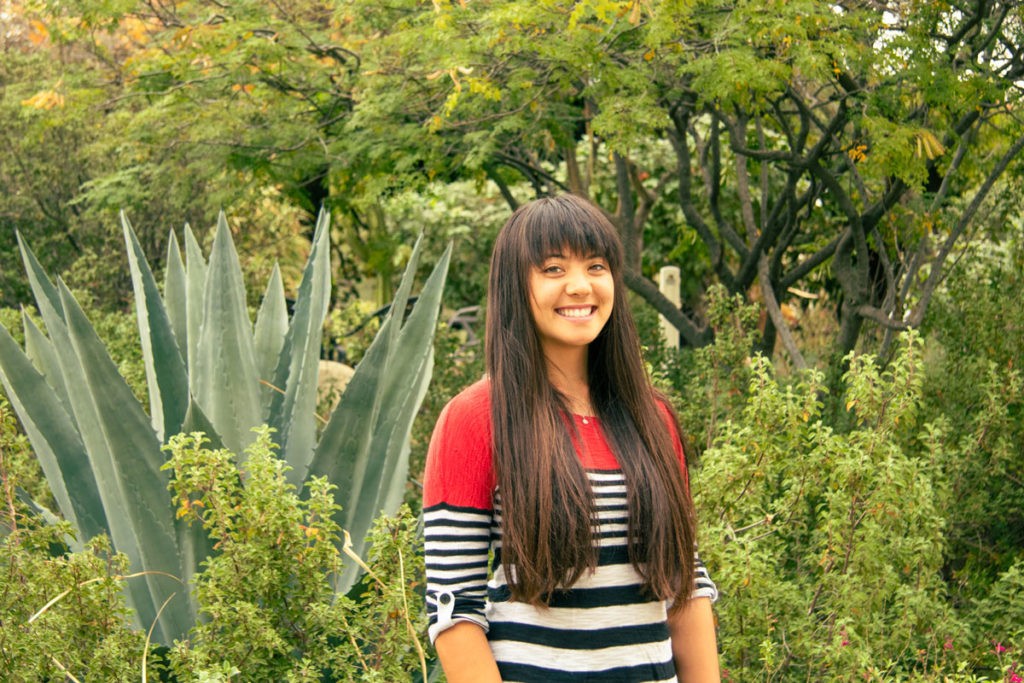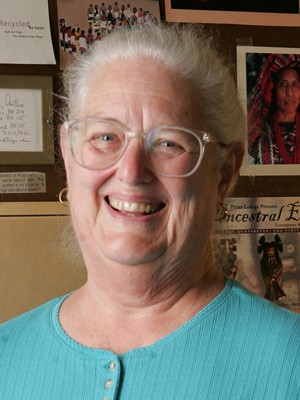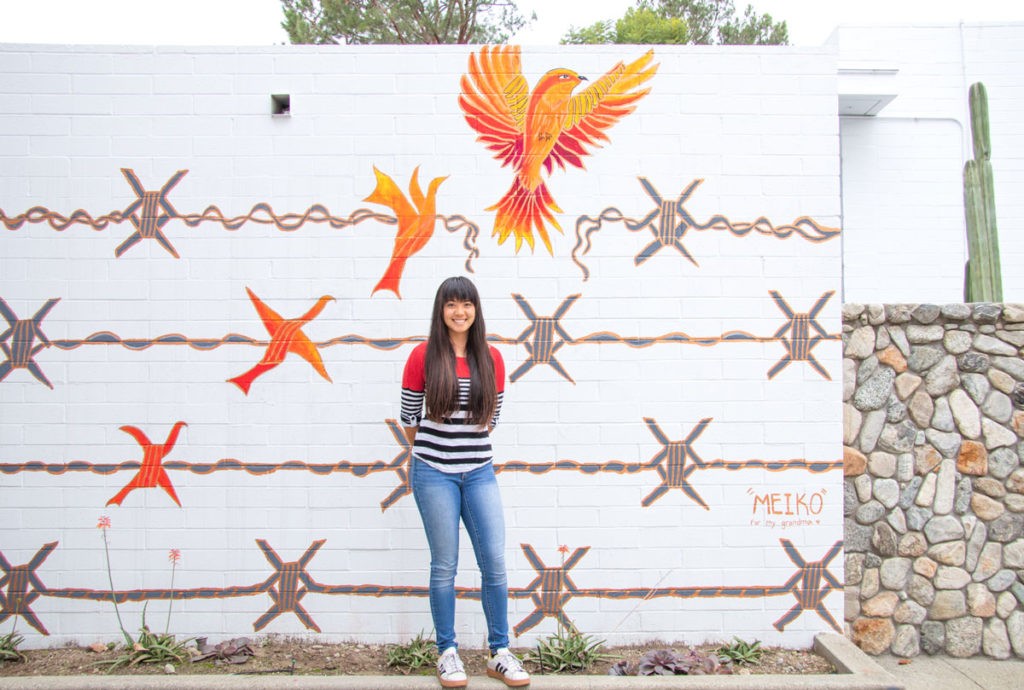Discover how Ottengheime taps into ancient and family history as a muralist, art galleries fellow, and anthropologist
 Shelby Ottengheime ’23
Shelby Ottengheime ’23
At the nexus of archaeology, art, and family history lies the distinctly Pitzer experience of senior Shelby Ottengheime ’23. Her multifaceted interests begin with her major in anthropology on the human evolution, prehistory, and material culture (HEP) track—which will soon culminate in an archaeological dig in Belize.
Ottengheime will be joining Pomona College Visiting Professor of Anthropology Arlen Chase in spring 2023 at the site of Caracol, Belize, the largest known ancient Maya city with a population of over 100,000 people in A.D. 650. Chase’s team will look at a residential area to compare pottery shards and remains in the different neighborhoods.
“Even just a kilometer apart, they have distinct pottery styles and jewelry,” said Ottengheime. “We’ll be theorizing about why that is by looking at the different minerals and clays in these neighborhoods.”
Ottengheime credits Pitzer Professor of Anthropology Sheryl Miller for sparking her interest in anthropology and archaeology.
“The way she teaches is like telling a story,” said Ottengheime. “It mimics how our ancestors pass down generational knowledge but in an academic setting.”
Pushing “Me to Be a Better Student and Academic”
 Professor Sheryl Miller
Professor Sheryl Miller
When Ottengheime decided to take off the fall 2020 semester due to the pandemic, Miller offered her a position as her research assistant. Ottengheime gained valuable experience investigating archaeological inquiries and learning how to pick apart academic arguments. Because of her stalwart encouragement, Miller has become one of Ottengheime’s favorite people at Pitzer.
“She pushed me to be a better student and academic,” said Ottengheime. “She has my back and tells me when to take a breather.”
Ottengheime was drawn to the HEP track in anthropology because it synthesizes history, art, humanities, and material culture.
“I’m thinking about why we create things,” said Ottengheime. “This major is about understanding why we make things and what it reflects about us. The creation of art is a mirror for our society.”
A Passion for Art
As the daughter of artists, Ottengheime has found several ways to pursue her lifelong passion for art. She became a Pitzer College Art Galleries Fellow to engage students, faculty, and classes across disciplines with the on-campus art galleries and help them “see the interdisciplinary aspects of art and how important it is for our education.”
Ottengheime is also leaving a family legacy on campus through her “Meiko” mural at Mead Hall. Students can submit proposals to paint murals almost anywhere on Pitzer’s campus, and Ottengheime decided to create a mural as her final project for an art conservation class at Scripps College.
Drawing inspiration from the artist David Monkawa, the mural is named after Ottengheime’s grandmother and alludes to her perseverance during and after being detained in a Japanese incarceration camp during World War II.
 Shelby Ottengheime ’23 stands in front of her mural on Mead Hall.
Shelby Ottengheime ’23 stands in front of her mural on Mead Hall.
“I like the juxtaposition between the image of freedom, which is a bird, and the confining, dark imagery of barbed wire,” said Ottengheime. “I like the evolution of the bird slowly coming free.”
Ottengheime’s grandmother, who will turn 100 this year, has often used the Japanese term “gaman,” which roughly translates to persevering with dignity and fortitude.
“If I was having a rough time in school, she said hold your head high and be proud of who you are,” said Ottengheime. “‘Gaman’ was what her mother told her in the camps.”
In summer 2020, Ottengheime received a Getty Marrow grant to serve as a curatorial and visitor engagement intern at the Japanese American National Museum (JANM), which her grandmother often took her to as a child. Ottengheime combed through JANM’s collection of art created by Japanese Americans incarcerated in the WWII camps to reunite the art with the families.
“It was a way to give back to a community and institution that gave me so much,” said Ottengheime. “Directly giving back to my community is what I want to do in the future.”
After the archaeological dig in the spring, Ottengheime hopes to join the Peace Corps. Ottengheime has not had much experience abroad—aside from briefly being in Vietnam in 2019 as a Pitzer College representative at Hue University through the 12-day Global Local Mentorship Project, initiated by Pitzer’s Institute for Global Local Action & Study.
“Covid took my study abroad, so I would love to have the opportunity to live elsewhere and engage with a community and culture that’s not my own,” said Ottengheime.